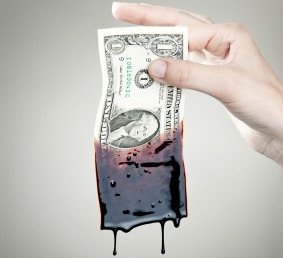
Michael Leibreich.
The discussion around clean energy has long been clouded by ideology, so it’s been nice to see the growing size and influence of the independent market-research firm Bloomberg New Energy Finance, which takes the dynamics of cleantech markets seriously and produces credible data and analysis on them.
The firm was started in 2004 by entrepreneur and venture capitalist Michael Liebreich, who sold it to Bloomberg in 2009 and remains its chief executive. Liebreich is an energy polymath, a frequent speaker, commentator, and participant on more boards, panels, advisory groups, and foundations than I care to list. (Check out his official bio.) I don’t know of anyone who has a broader and more sensible view of the energy landscape. So I thought I’d chat with him! Our discussion was long, info-rich, and — I’m not gonna lie — a little technical, so I’m breaking it up into four digestible parts.
We kick it off today with a few questions about the much-ballyhooed recent oil and gas glut.
Q. What do you make of the notion, echoed by a recent report out of Harvard [PDF], that we’re entering a new age of plentiful oil?
A. If everybody’s so happy about this oil glut, why is the price still 80, 90, 100 bucks [per barrel]? If they’re really brave, they should say, “the price will go back to $28 and this whole nightmare of the last 10 years is over. We can all buy Hummers again.” But they’re not going to be brave enough to say that — they’re only going to talk about volume, not price.
It’s extraordinary how little understanding there is of the role of energy prices in the rate of oil exploration and exploitation. When I started a business in 2004, the oil price was $28 [per barrel] and, surprise, surprise, we hadn’t found very much for a while. Then the oil price went up and, surprise, surprise, we found a lot. When the price is low, when there’s little exploration and it looks like we’re not finding anything, the peakists go nuts and say, “we’re going to run out.” Then when the price goes up and we bother to do some prospecting and find stuff, the oilists say, “see, we’ve got enough forever.”
Tight-oil technology has progressed faster than anticipated, but on the other hand, so has middle-class-driven demand in China and India. It’s not even a draw — we’re still seeing high prices. For all that there’s a lot more, it’s still not enough to meet the demand.
The question is not, do we have enough oil, but at what price — what are the economic implications? I have absolutely no doubt that there will still be oil in 300 years. What price will it be? What is the price at which oil is materially slowing down the wellbeing of populations? That’s the real question: when is oil extracting a rent that’s over and above its utility? (That’s before you even get into externality costs.)
Q. A similar energy-glut story is being told about natural gas in North America. It’s reshaping the whole energy landscape. How’s that going to play out over the next five or ten years?
A. America has these periodic love affairs with new energy technologies. We can all remember the hydrogen revolution, the corn ethanol revolution, electric vehicles (which is still ongoing) — the big one right now is clearly fracking. Before we throw our knickers up on stage, though, it’s worth taking a step back.
We’ve got $2 [per MBtu, or Million British thermal units] gas — or, I just looked and it’s around $2.70 now — and I was just reading [Exxon CEO] Rex Tillerson saying, “we’re losing our shirts at current prices.” That’s not news. We think dry natural gas costs somewhere between $4 and $5 [per MBtu] to extract. A number of things are driving the price below that. There’s the recession and slow recovery. There’s the step function blast of supply, the fact that all this new natural gas came onto the market before industry and utilities could absorb it. People have these “drill or lose” leases, which they are drilling even though they’re losing. (The more fixated you are on jam tomorrow, the more you’re spending on bread today.)
And the fact that oil prices are high means that if you’ve got a wet [natural gas] field, those liquids, which are sold at very high oil-related prices, are in a sense subsidizing you to dump natural gas. [Ed. note: natural gas fields produce ethane, propane, and butane that can be separated out and sold to refineries or chemical plants as a feedstock.] There are weird economics going on, where the higher the oil price, the lower the gas price.
Is that sustainable? No, of course not. We’ve got a gas price at the equivalent, on an energy-content basis, of something like $18 or $19 [per barrel of oil]. That huge difference between high oil prices and low gas prices can’t be maintained. Look at rig counts, which are coming down. Look at the gas futures prices. We are going to see gas prices going up.
You’ve got this sort of weird collective hysteria about gas. The president said, “we may have 100 years of domestic gas in the U.S.” Everybody immediately translates that into 100 years at $2/MBtu. But that’s not right. Long-term, it needs to be at least $4 or $5 and probably more like $6 to give people a return on capital. And if you look at the “100 year” piece of that, it’s a fascinating number. As far as we can see, it refers to gas in the ground. Gas in the ground is nice, but we’re talking about cheap gas, under $6/MBtu. (Onshore wind right now is competitive with gas at $6.) If you want gas below $6, guess what, you haven’t got a 100 year supply, you’ve probably got more like 50 years.
That’s still a long time. But then that’s 50 years at current extraction rates. What happens if you use the gas to displace coal (which is a fantastic thing to do), and then industry uses gas for its heat and power needs, and then, and then certain transportation fleets use natural gas, and then export, for arbitrage opportunities … so hang on a second. If you double your use of gas in the U.S. economy, then suddenly 50 years becomes 25 years.
So the reality is, it’s 25 years and it’s not $2.
Does that mean the whole thing is a mirage? Of course not. It’s still displacing coal. It still means economic growth. It’s got a huge, huge footprint. It probably means that during that 25-year period the U.S. can re-industrialize; it is going to have lower energy costs even if gas goes up to $6. It’s still a great thing to know you’ve got a load of gas.
But it also means you’ve got the other 75 percent of the energy matrix to deal with. What will happen over the next 5 years is, the pendulum will swing back. That gas will be absorbed, the prices will come back up. There might be some exports, but I’d be surprised if there’s that many people brave enough to build liquefaction trains — liquefaction, transport, and gasification costs $7. If you think the domestic cost might be $5 or $6, you better really believe that the Asian price is going to be $12 or $13 forever in order to earn a return on that.
Life is going to return to normal, but with more gas in the mix. That’s the reality.
Q. What happens if we spend the next 25 years committing all that gas, building all that infrastructure — pipelines, natural gas vehicles, gas power plants — and then cheap gas goes away?
A. You’ll get lots more data during that 25 year period. It’s not like you get to year 24 and you suck on the straw and it makes that horrible noise. You’re going to know before. The more realistic worry is that you spend 5 years doing those things.
The other big piece is decline rate. Do we really understand what happens in year 8, 10, 12, 14 of a fracked field? The answer is: no, we don’t, because there aren’t any. A normal [gas] field is a few big years and then it goes flat, but it lives on at that steady rate. There’s some thinking that says that a fracked field will just be an exponential decline, with no flattening. Nobody really knows. And by the way, the people with the data are all raising money; they’re not going to share the best data unless they have to for regulatory reasons.
We’ll get more data in five years. It’s entirely possible the miracle continues and we’ve still got $2 gas and you can replay this tape and embarrass me. But I’m betting in five years we’ll say, “it’s great, gas has doubled its share, there’s a bunch more refineries and demand, and now we’re starting to reach a new equilibrium, with much less coal, much more renewables and natural gas, maybe a few nuclear plants, and a whole load of energy efficiency.” And we’d still be in quite a high energy-price regime.
Read part two of this interview.



